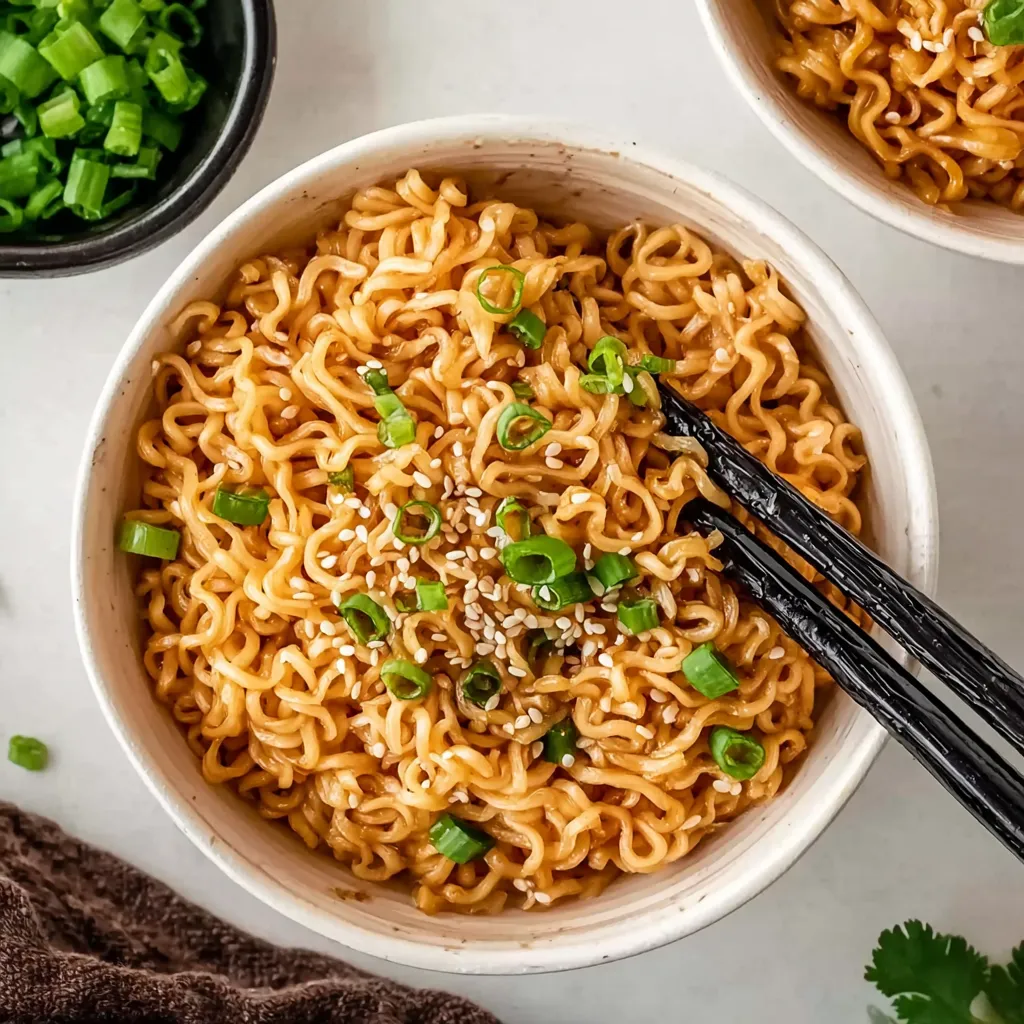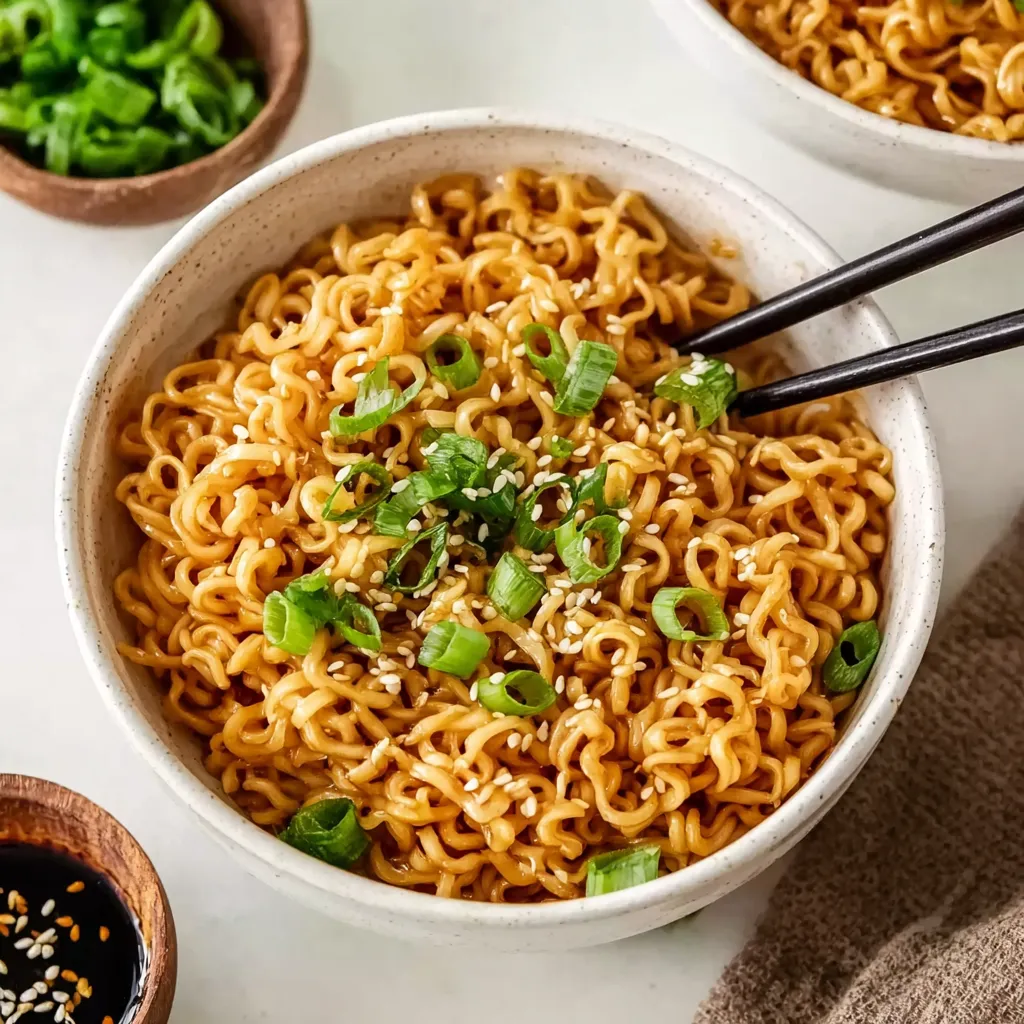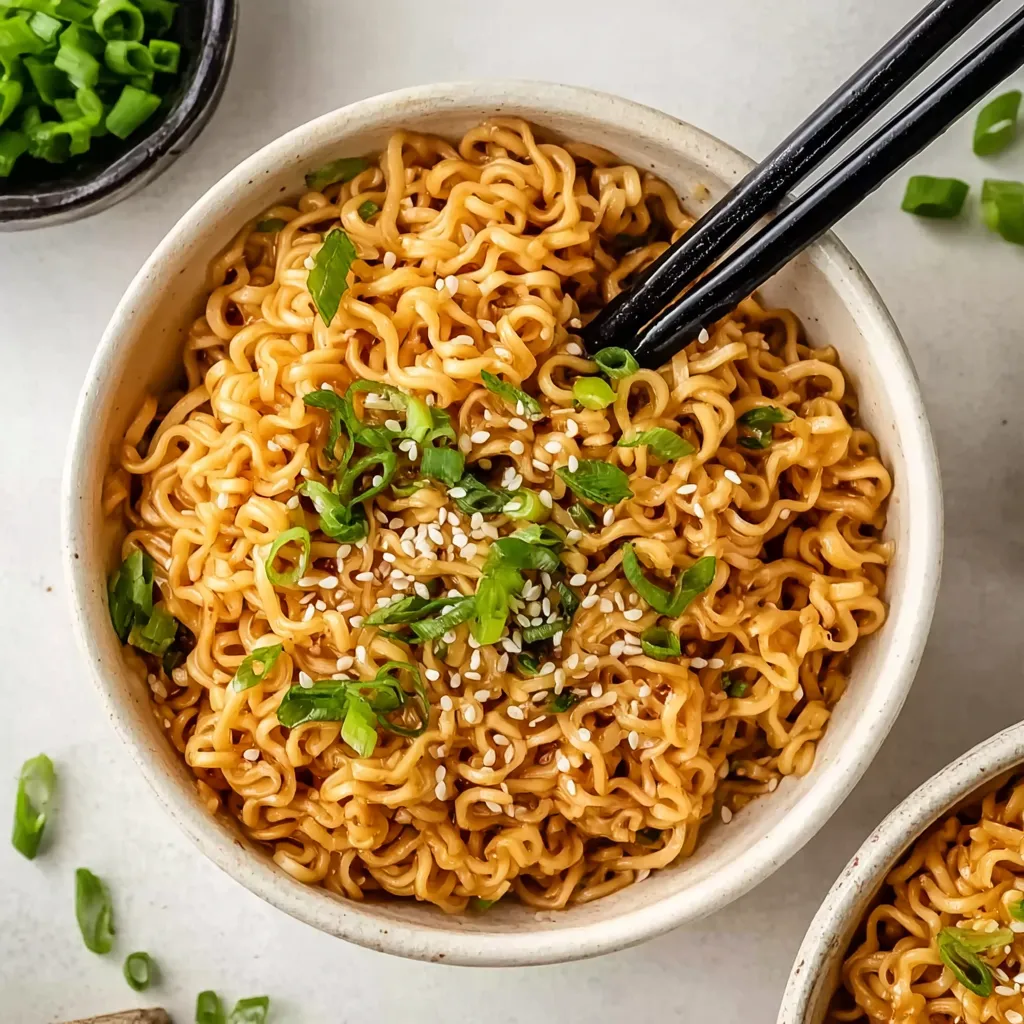 Save
Save
This sesame garlic ramen transforms humble instant noodles into a restaurant-worthy dish with minimal effort. When time is tight but flavor is non-negotiable, this 10-minute wonder has become my weeknight salvation.
I first created this recipe during my college years when I was broke but craving something better than plain ramen. Now it's the meal I turn to at least twice a month when I need comfort food but have zero energy to cook anything elaborate.
Ingredients
- 4 blocks ramen noodles 12 oz total with seasoning packets discarded. These humble packages transform beautifully and cost mere pennies.
- 6 cloves garlic minced. Fresh is absolutely essential here the jarred stuff simply will not deliver the same aromatic punch.
- 2 tablespoons sesame oil. Look for toasted sesame oil for maximum flavor its nutty aroma is irreplaceable.
- 1 teaspoon brown sugar. This tiny amount balances the savory elements perfectly without making the dish sweet.
- ¼ cup plus 1 tablespoon soy sauce. I prefer low sodium so the garlic can shine through.
- Sliced green onions for garnish. The fresh bite cuts through the richness wonderfully.
- Sesame seeds for garnish. Toast them briefly in a dry pan first for enhanced flavor.
Step-by-Step Instructions
- Boil The Noodles
- Fill a medium pot with water and bring to a rolling boil. Add ramen noodles and cook according to package directions typically 2 to 3 minutes until just tender. Remember to discard those seasoning packets we are creating something much better. Drain thoroughly in a colander but do not rinse as the starchy exterior helps the sauce cling better.
- Create The Flavor Base
- Heat sesame oil in a large skillet over medium heat until it shimmers slightly. Add minced garlic and cook for exactly 1 to 2 minutes stirring constantly to prevent burning. The garlic should become fragrant and just barely golden this is the foundation of your dish so watch it carefully. Burnt garlic will ruin the entire recipe.
- Build The Sauce
- Once garlic is perfectly golden add brown sugar and stir until it dissolves about 15 seconds. Immediately pour in soy sauce which will sizzle dramatically as it hits the hot pan. Allow the mixture to bubble gently for 30 seconds to meld the flavors. The sauce will thicken slightly but remain primarily liquid.
- Combine And Finish
- Add drained noodles directly to the skillet with sauce. Using tongs toss vigorously for about 1 minute ensuring every strand is gloriously coated with the savory mixture. The noodles will absorb some sauce and become deeply flavorful. Remove from heat promptly to prevent overcooking.
- Garnish And Serve
- Transfer noodles to serving bowls and sprinkle generously with sliced green onions and sesame seeds. Serve immediately while steaming hot for the best texture and flavor experience.
 Save
Save
The sesame oil is absolutely non-negotiable in this recipe. I once tried substituting olive oil during a pantry emergency and the dish lost its soul completely. That distinctive nutty essence is what transforms these humble noodles from ordinary to crave-worthy.
Storage Tips
These noodles store surprisingly well despite conventional wisdom about leftover pasta. Place cooled leftovers in an airtight container and refrigerate for up to 3 days. When reheating add a tiny splash of water before microwaving to restore moisture. The flavors actually intensify overnight making this possibly even better the next day.
Easy Additions
The beauty of this recipe lies in its versatility. For protein try adding a fried egg with runny yolk shredded rotisserie chicken or pan-seared tofu cubes. Vegetable options are endless toss in some quickly blanched broccoli sautéed mushrooms or fresh spinach that wilts perfectly in the hot noodles. Each addition creates an entirely new dish while maintaining the soul of the original.
Ingredient Substitutions
No sesame oil? In absolute emergencies you can substitute 2 tablespoons neutral oil plus 1 tablespoon tahini. Missing brown sugar? Honey or maple syrup work beautifully in equal amounts. For gluten-free diets substitute rice noodles and tamari for traditional ramen and soy sauce. The essence remains intact even with these adaptations.
 Save
Save
Recipe FAQs
- → Can I add protein to these sesame garlic noodles?
Absolutely! These noodles pair wonderfully with protein additions. Try adding cooked shredded chicken, sautéed tofu, or a fried egg on top. For seafood lovers, shrimp or thinly sliced beef cook quickly and absorb the sauce beautifully. Simply cook your protein separately and add it when combining the noodles with sauce.
- → What vegetables work well with this dish?
This versatile dish welcomes many vegetables. Quick-cooking options include sliced bell peppers, snow peas, bean sprouts, spinach, or thinly sliced carrots. For heartier vegetables like broccoli or bok choy, blanch them briefly before adding. Sauté vegetables with the garlic for integrated flavor, or add them at the end for more texture and freshness.
- → Is there a substitute for sesame oil?
While sesame oil provides the distinctive nutty flavor that defines this dish, you can substitute with olive oil or vegetable oil in a pinch. For a closer flavor match, add 1-2 teaspoons of tahini paste to regular oil. However, sesame oil is worth purchasing for authentic Asian flavors and can be used in many other dishes.
- → Can I make these noodles gluten-free?
Yes! Use rice-based ramen or 100% buckwheat soba noodles instead of wheat-based ramen. Also substitute regular soy sauce with tamari or certified gluten-free soy sauce. Double-check all packaged ingredients for hidden gluten sources. The rest of the ingredients are naturally gluten-free, making this dish easy to adapt.
- → How long do leftovers keep?
These noodles are best enjoyed fresh, but leftovers can be stored in an airtight container in the refrigerator for up to 2 days. When reheating, add a splash of water or broth to refresh the noodles as they tend to absorb the sauce and become dry. A quick 1-2 minutes in the microwave or a brief stir-fry will revive them nicely.
- → Can I make the sauce ahead of time?
Absolutely! The sauce can be prepared up to 3 days in advance and stored in the refrigerator. This makes weeknight meals even quicker - just cook fresh noodles and toss with the pre-made sauce. If the sauce thickens when refrigerated, allow it to come to room temperature or add a tiny splash of warm water before using.
